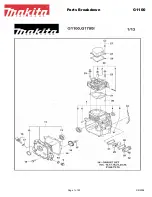
120
4. Parameter description
Parameter
<Setting>
• If the motor and load can be completely disengaged, please select P.301=1, when the motor rotation,
the motor parameters auto measurement, then press down
FWD
or
REV
, the inverter will automatically
calculate the following parameters: P.308~P.312.
• If the motor and load can
not be fully
disengaged, please select P.301=2, when the motor stopped, the
motor parameters auto measurement, then press down
FWD
or
REV
, the inverter will automatically
calculate the following parameters: P.308~P.312.
• Users can also calculate two parameters according to the motor nameplates. Used in the calculation
of the motor nameplate parameters: Rated voltage U, rated current I, rated frequency
f
and power
factor
.
• Motor no-load excitation current calculation method and the motor mutual inductance are
calculated as follows, including L6 for motor leakage inductance.
No-load excitation current:
2
0
1
I
I
Mutual inductance:
6
0
3
2
L
I
f
U
L
m
I
0
is the no-load excitation current
,
L
m
is the mutual inductance
,
L
6
is the leakage inductance.
Note: 1. When the inverter and motor with different levels of use, please make sure the input parameters of the
motor nameplate from P.302 to P.307. The vector control mode dependent on motor parameters strongly. If
you need obtain good control performance, you must obtain the exact parameters of the controlled motor.
2. When any one or more parameters have been manually changed, please make a P.997 function, in order to
reload new parameters values.
4.65 Speed Control Gain Adjustment (P.320~P.321)
P.320 “Speed control proportion coefficient”
P.321 “Speed control integral coefficient”
Parameter
Factory setting
Setting range
Remarks
320
100%
0~2000%
---
321
0.30s
0~20s
---
<Setting>
• P.320 set the speed control proportional gain. (The set value is set to a few bigger, for speed
changing follow instructions will become better, the speed changing caused by external disturbance
will be smaller. )















































